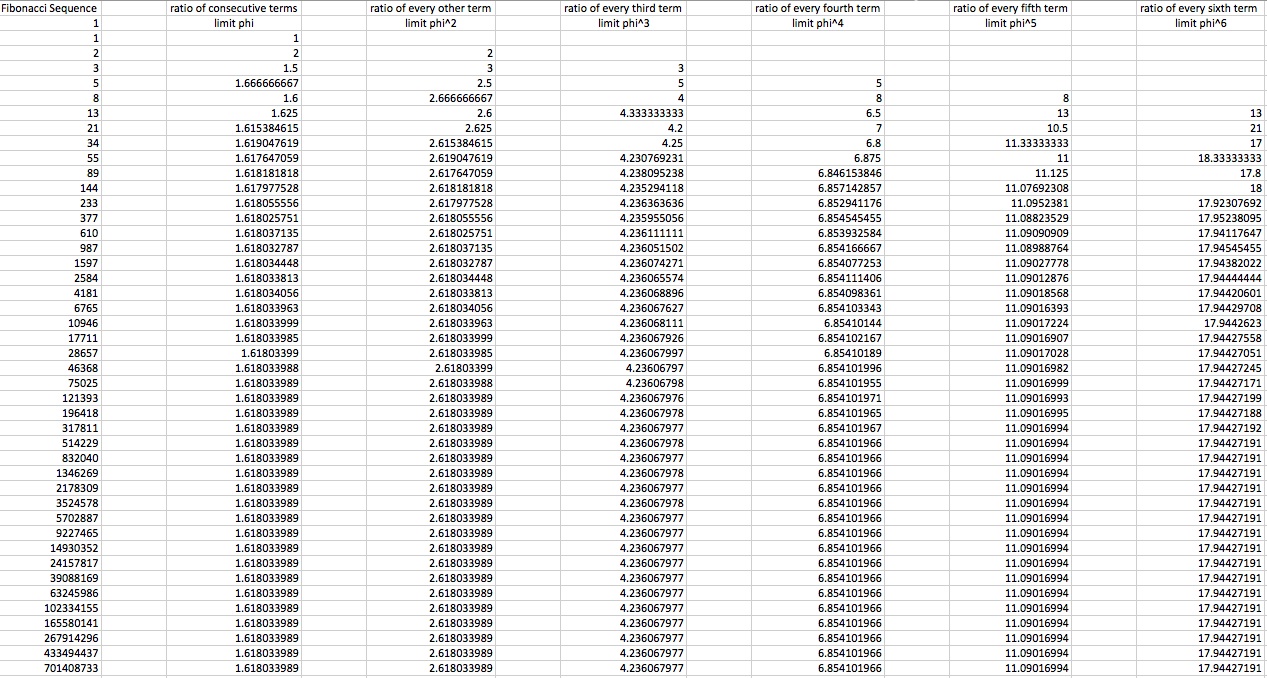
The Fibonacci Sequence
by
Bradley Johnson
The Fibonacci sequence has some interesting properties when we look at the ratios of the terms. The sequence itself is given by a recursive formula in which each term is obtained from the sum of the two previous terms. We must start with seed values of 1,1 (the first two terms of the sequence). By the recursive definition the third term is 1+1 =2, the fourth term 1+2 = 3 and so on, as shown in the table below. Also shown in the table are the ratios of consective terms, every other term, every third term, etc, up to every sixth term. The interesting thing that we find is that the ratio of consecutive terms has a limiting value of phi (the golden ratio). Looking at the sequence of ratios of every other term from the Fibonacci sequence, we see that the limiting value is phi +1 which is equivalent to phi squared. It can be seen that a pattern holds for the successive sequences of ratios of the Fibonacci sequence. Let the Nth sequence of ratios be given by the ratio of every Nth term (i.e the 5th sequence starts with 8:1 , 13:1, ...) . The limit of the Nth sequence is phi raised to the N.

Return to homepage


